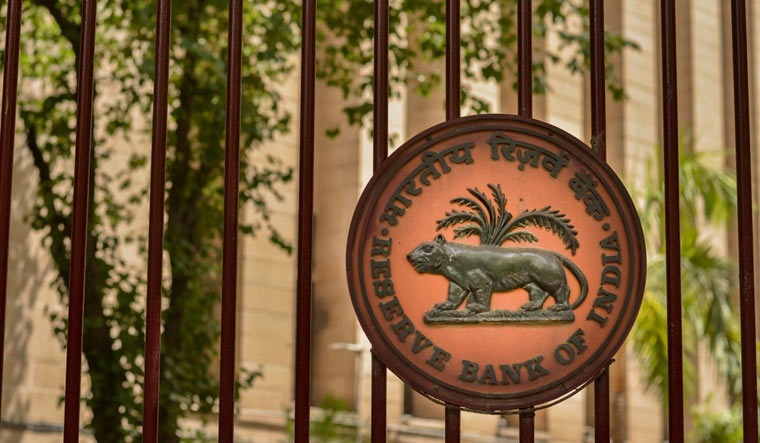The Reserve Bank of India, which raised the repo rate by 50 basis points in the last three consecutive monetary policy committee (MPC) meetings, could now reduce the pace of the rate hikes, with inflation showing early signs of cooling and the GDP growth expectations for this year and the next moderating amid a global slowdown, say analysts.
This has been a year when major central banks have raced to raise record-low interest rates in order to tame rising inflation. The RBI joined in late; still, since May, it has hiked the benchmark rate at which it lends commercial banks by 190 basis points from 4.0 per cent to 5.9 per cent.
The MPC, which meets bi-monthly, began its meeting on Monday and will announce its decision on rates on Wednesday. While the repo rate is still expected to go up, the expectation is that it could be only in the range of 25-35 basis points.
“A 35 bps hike will signal a mix of cautiousness and comfort while keeping all options open (including a pause or a smaller hike) for the February policy depending on the conditions,” feels Suvodeep Rakshit, chief economist at Kotak Institutional Equities.
What should give the RBI some comfort is inflation has shown signs of moderating. The consumer price index (CPI)-based inflation has remained above the central bank’s upper tolerance band of 6 per cent for three quarters now. After hitting a five-month high of 7.4 per cent in September, retail inflation in October eased to 6.77 per cent.
RBI’s own trajectory projects inflation to decline from 7.1 per cent in the September quarter to 6.5 per cent in October-December and then further ease to 5.8 per cent in January-March 2023 and 5 per cent in April-June 2023.
Overseas, the US Federal Reserve has raised interest rates by 75 bps for four consecutive times. Interest rate hikes by global central banks have a bearing on India’s foreign exchange rates and so is also something the RBI has had to consider while deciding its rate strategy. Thankfully, inflation is also showing signs of easing in the US, which may prompt the Fed to also slow down the pace of its rate hikes. This should also be comforting for the RBI.
“Inflation in most developed economies remains elevated but showing signs of peaking. The US Fed has not surprised with a more-than-expected hawkish statement along with indications of a slower pace of hikes. Commodity prices have also come off, and the recent fall in crude prices is also encouraging though uncertain whether it will sustain. These factors will provide some confidence to the RBI in slowing the pace of rate hikes,” said Rakshit.
Others like Pankaj Pathak, fund manager – fixed income, Quantum Mutual Fund, also expect that the RBI may slow down the pace of rate hikes with a fall in commodity prices and some early signs of inflation coming down.
“Monetary policy often works with a long lag. The impact of past rate hikes and liquidity tightening measures is yet to be seen. Thus, there is a risk of over-tightening the monetary policy and hurting growth recovery at a nascent stage,” said Pathak, who sees a 25 bps rate hike this time around.
India’s GDP growth came in at 6.3 per cent in the July-September quarter and in recent weeks, several agencies have cut their India GDP growth forecasts in the backdrop of the expected slowdown in the global economy.
Credit ratings agency S&P, for instance, has lowered its GDP growth forecast for India to 7.0 per cent from earlier projected 7.30 per cent for 2022-23. The Organisation for Economic Co-operation and Development (OECD) recently slashed its India GDP growth expectations for the current financial year to 6.6 per cent from 6.9 per cent. The RBI has forecast India’s GDP to grow at 7 per cent in 2022-23.
So, while RBI is expected to raise repo rate again, come Wednesday, it may want to pause at some point and then study the impact of the rate hikes already taken. Industry body ASSOCHAM has also written to the RBI to moderate interest rate hikes to ensure that rising cost of borrowing doesn’t have an adverse and disproportionate impact on the nascent economic recovery.
The GDP growth last quarter, was in line with RBI’s projection and amid still sticky core inflation, it should “nudge the RBI to continue on its normalisation path, but at a slower pace, versus the front-loaded 50 bps hikes so far,” said Nomura economists Sonal Varma and Aurodeep Nandi.
Their base case scenario envisages a “downshift” to a 35 bps hike this time around and a final 25 bps rise in February.
“However, the February hike is a closer call, because if the growth signals start to deteriorate too rapidly in Q1 (Jan-March) 2023, then the MPC may see merit in halting the hiking cycle,” said Varma and Nandi.
Suman Chowdhury, chief analytical officer at Acuite Ratings and Research, is also expecting a “moderate” repo rate hike of 30-35 basis points this week. He said “downside risks” to Acuite’s 7 per cent GDP growth forecast for 2022-23 had “increased due to the intense global headwinds.”




